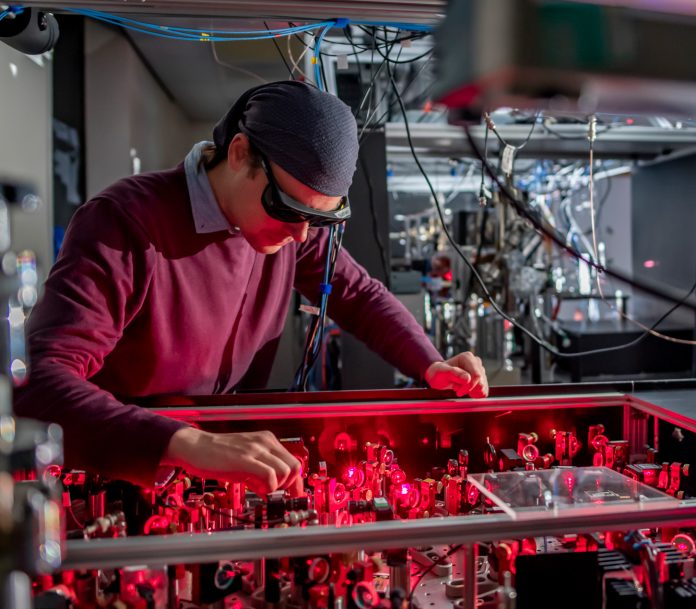Using a specially designed 3D printed vacuum system, scientists have developed a way to ‘trap’ dark matter with the aim of detecting domain walls, this will be a significant step forwards in unravelling some of the mysteries of the universe.
Scientists from the University of Nottingham’s’ School of Physics and Astronomy have created a 3D printed vacuum system that they will use in a new experiment to reduce the density of gas, then and add in ultra-cold lithium atoms to try to detect dark walls. The research has been published in Physical Review D.
Professor Clare Burrage from the School of Physics and Astronomy is one of the lead authors on the study and explains: “Ordinary matter that the world is made from is only a tiny fraction of the contents of the universe, around 5%, the rest is either dark matter or dark energy – we can see their effects on how the universe behaves but we don’t know what they are. One way people try to measure dark matter is to introduce a particle called a scalar field.
The researchers based the construction of the 3D vessels on the theory that light scalar fields, with double well potentials and direct matter couplings, undergo density driven phase transitions, leading to the formation of domain walls.
To detect these defects or dark walls the team have created a specially designed vacuum that they will use in a new experiment that will mimic moving from a dense environment to less dense environment. Using the new set-up they will cool lithium atoms with laser photons to -273 which is close to absolute zero, at this temperature they take on quantum properties which makes analysis more precise and predictable.
Lucia Hackermueller, Associate Professor in the School of Physics and Astronomy has led the design of the laboratory experiment, she explains, “The 3D printed vessels we are using as the vacuum chamber have been constructed using theoretical calculations of Dark Walls, this has created what we believed to be the ideal shape, structure and texture to trap the dark matter. To successfully demonstrate that dark walls have been trapped, we will let a cold atom cloud pass through those walls. The cloud is then deflected. To cool those atoms we fire laser photons at the atoms, which reduces the energy in the atom – this is like slowing down an elephant using snowballs!”
The system took the team three years to build and they expect to have results within a year.







